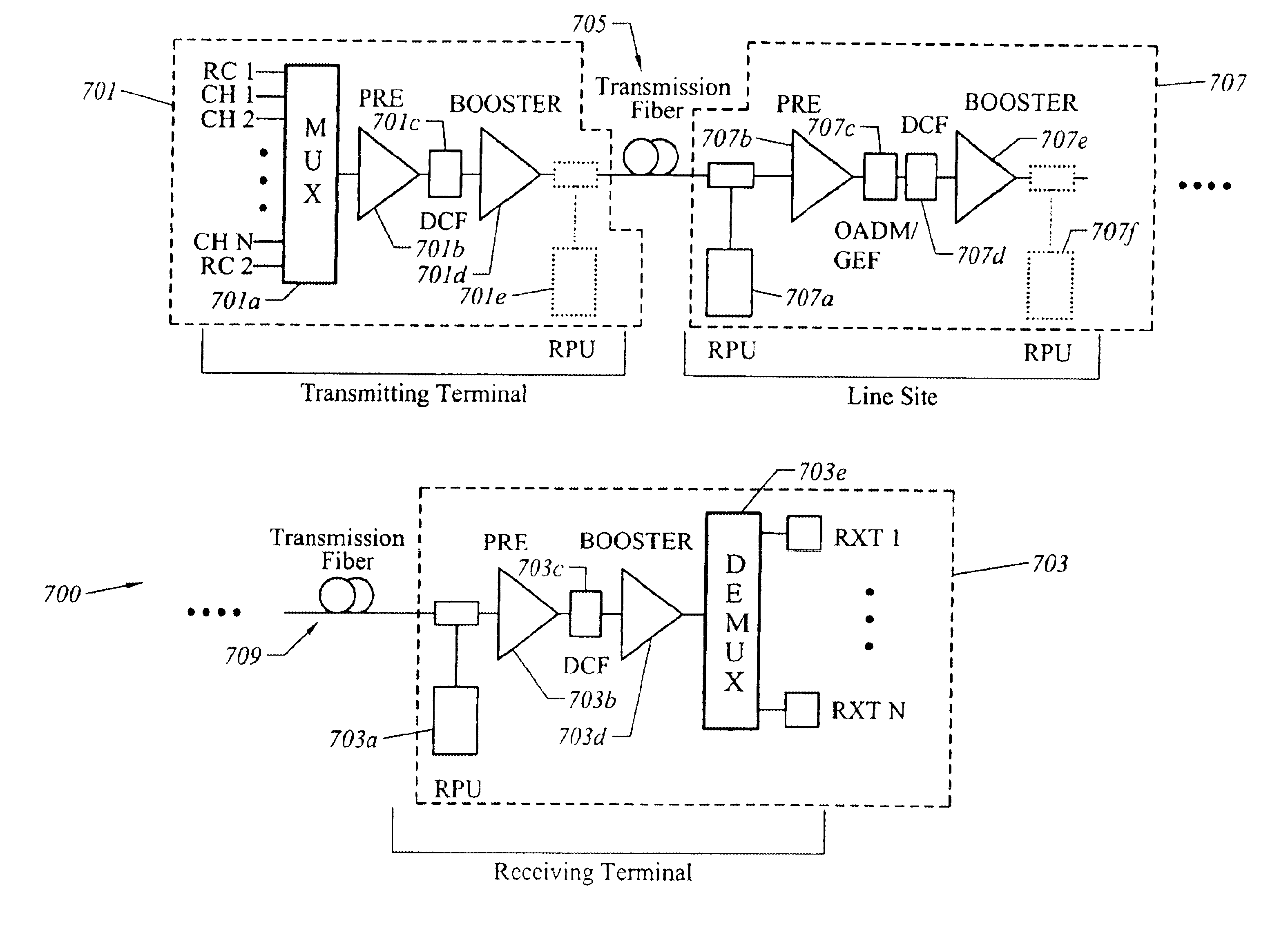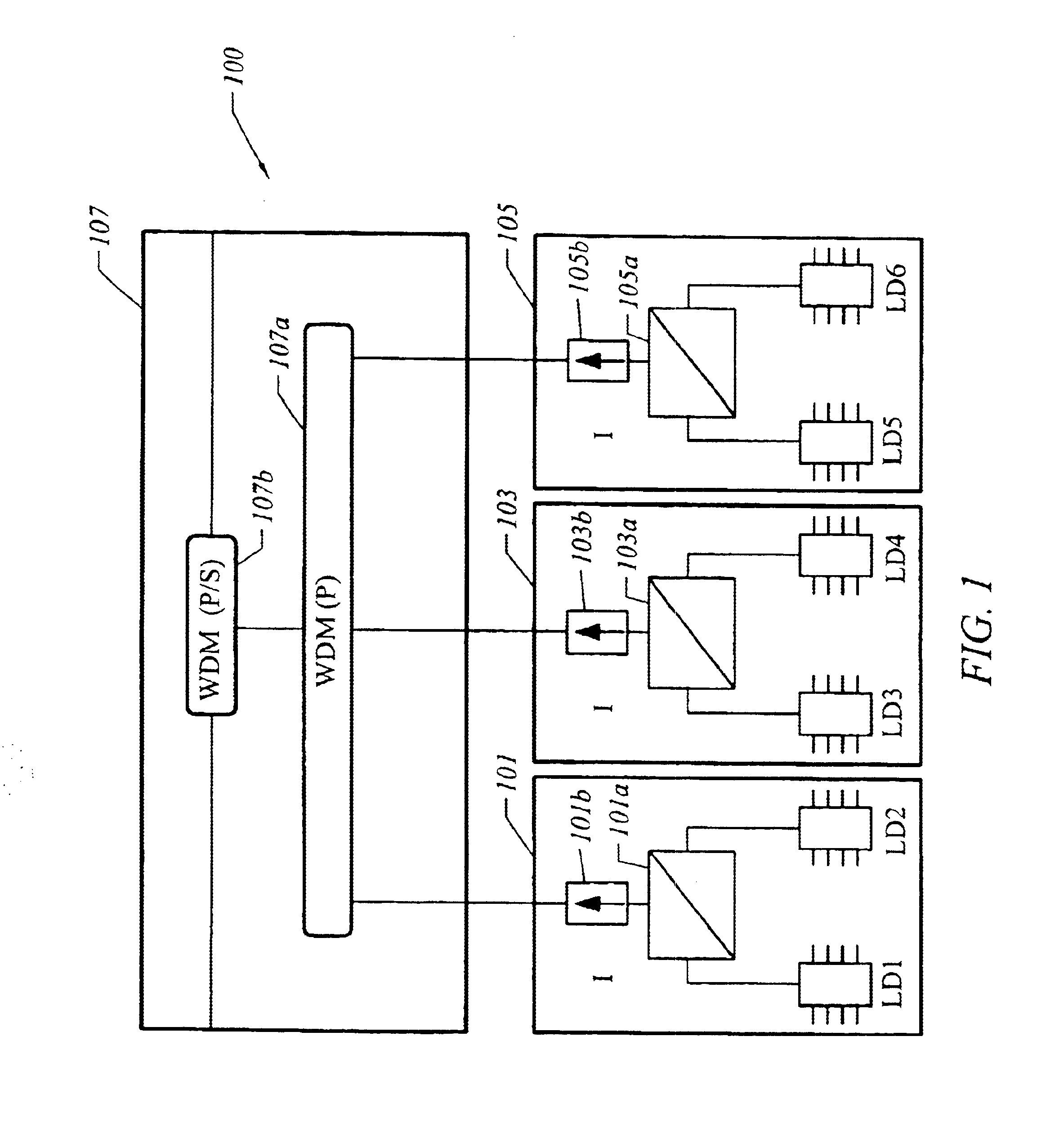Automatic raman gain and tilt control for ultra-long-distance dense WDM optical communication system
a technology of optical communication system and automatic raman, applied in the field of optical communication system, can solve the problems of inability to precisely predict the behavior of distributed raman amplifier, the limitations of the bandwidth of existing communication system, and the inability to successfully implement these two amplifiers with each other, so as to minimize the non-linear effects of transmission fibers and increase signal-to-noise ratio performance, the effect of constant power
- Summary
- Abstract
- Description
- Claims
- Application Information
AI Technical Summary
Benefits of technology
Problems solved by technology
Method used
Image
Examples
Embodiment Construction
[0070]In the following description, for the purpose of explanation, specific details are set forth in order to provide a thorough understanding of the invention. However, it will be apparent that the invention may be practiced without these specific details. In some instances, well-known structures and devices are depicted in block diagram form in order to avoid unnecessarily obscuring the invention.
[0071]The present invention provides compensation for gain tilt accumulation in a WDM optical communication system. In particular, the gain and flatness of the distributed Raman amplifiers are controlled using two reference signals. This feature, combined with a suitable gain control scheme for the EDFA, allows the WDM system to be automatically adapted to different signals are positioned at the two boundaries of each sub-band. The reference signals can also coincide with transmitted signals within the system band. These reference signals are locally detected at each amplification site (...
PUM
 Login to View More
Login to View More Abstract
Description
Claims
Application Information
 Login to View More
Login to View More - R&D
- Intellectual Property
- Life Sciences
- Materials
- Tech Scout
- Unparalleled Data Quality
- Higher Quality Content
- 60% Fewer Hallucinations
Browse by: Latest US Patents, China's latest patents, Technical Efficacy Thesaurus, Application Domain, Technology Topic, Popular Technical Reports.
© 2025 PatSnap. All rights reserved.Legal|Privacy policy|Modern Slavery Act Transparency Statement|Sitemap|About US| Contact US: help@patsnap.com



